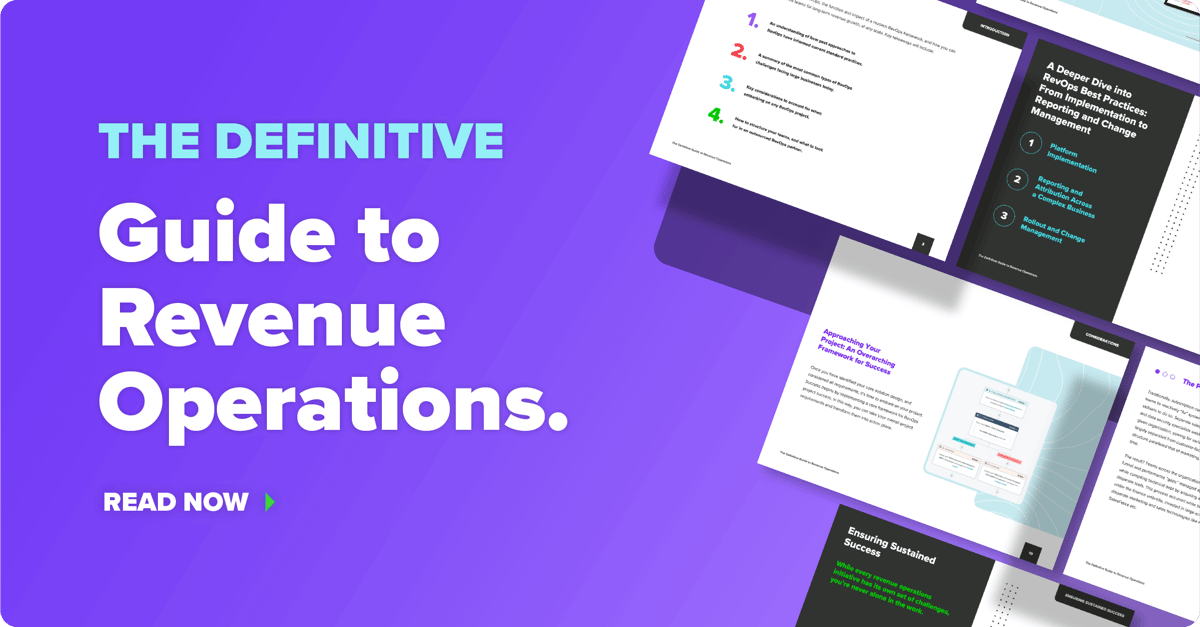
When it comes to generating revenue for your business, we typically think of sales closing deals to bring in new business. Marketing and sales get to high-five when you bring in that shiny new inbound lead, nurture them through the funnel and eventually sign the contract to close the deal.
While that’s a great way to grow your business, there is another avenue of revenue generation that is often overlooked: expansion revenue.
What is Expansion Revenue?
Expansion revenue is the revenue growth that you gain from your existing customers.
“Your expansion revenue is the revenue that you actually brought in from upsells and cross-sells over a period of time minus what you had from upsells and cross-sells at the beginning of that same time period,” says Guido Bartolacci, Head of Demand Generation for New Breed.
Cross-sell’s are when you expand your scope of engagement with a customer by adding on a product or service that your customer doesn’t currently have. An upsell is when you get an existing customer to purchase more hours, a larger package or a higher level of your product or service than they are already using.
For example, say a customer uses HubSpot Marketing Hub Professional. If they upgrade to the Enterprise version of the Marketing Hub, that’d be considered an upsell. That customer is upgrading their existing software package, which comes at a higher cost. This may be because they have grown in size or maybe they need more functions and capabilities that only come in a higher package.
If that customer purchases HubSpot’s Service Hub, that would be a cross-sell because the Service Hub is a different product than the Marketing Hub.
Standard renewals, however, are not considered to contribute toward expansion revenue because you can technically account for the revenue you will bring in from them based on their contract unless they churn.
Why Does Expansion Revenue Matter?
Expansion revenue is one of the more efficient ways to grow your business. On average, it is five times more costly to acquire a new customer than it is to retain or expand an existing customer.
This comes down to the amount of effort that is needed to acquire that customer. If you are focusing on bringing in new customers, then your marketing team will invest resources in attracting and nurturing a lead. Once that lead is qualified, your sales team will guide them through the sales pipeline, and hopefully that deal ends up closing and generates a customer for your company.
On the other side of the fence, when it comes to expansion revenue, it may be as simple as sending an email or having a call to discuss growth for an existing customer.
Upselling or cross-selling should not be difficult if you are truly benefiting your customers through your product or service. It should be a natural progression that they either begin to buy more from you as they grow or that they need to add on additional features and benefits to support their growth.
We also have an entire post about the impact of expansion revenue on your business growth if you want to learn more.
How to Increase Your Expansion Revenue
There are a lot of different ways that you can set your business up for success in terms of expansion revenue. Offering as many avenues as possible for your customers to educate themselves on your product is a great place to start.
For example, creating a knowledge base for your customers will ensure that they are truly adopting and understanding your product.
Using tools like surveys and a ticketing system will help your customers give you feedback so that you can provide the best product possible, as well as make necessary updates and tweaks.
You can also make adjustments to your packaging and pricing as well as make product developments to suit the needs of your current customers in terms of features and offerings.
You won’t be able to get customers to renew, let alone upsell or cross-sell, if they aren’t truly passionate about both your product and the service you provide them.
Ultimately, you need to be offering the best product and service possible to your customers so when you present them with an offer to upgrade or cross-sell it feels like a no-brainer.
Bringing in the Right Customers
If you aren’t bringing in the right customers for your business, then there’s no way they are going to be sticking around long enough for a cross-sell or upsell.
That’s where an inbound marketing strategy fits into the equation. Inbound is a great way to ensure you are bringing in the best-fit customers possible from the start.
You do this by creating content that truly speaks to the customers who will adopt your product and become evangelists. You should be honing in on your buyer personas and ideal customer profiles (ICPs) to ensure the content you are using to bring leads to your site are the right type of leads.
To ensure this happens, develop and implement a content strategy that helps educate prospects on why they are, or aren’t, a good fit for your company before they even talk to your sales team.
You can use your personas and ICP’s to speak to prospects’ pain points and challenges and build that relationship with them early on, making the work for your team even easier down the line.
The Takeaway
Bringing in new business to your company is extremely important. But, you should also be focusing on your current customers and making sure they are growing and adopting your product to the best of their ability.
Ideally, about 20–40% of your annual revenue should come from expansion revenue. Maintaining a balance of both expansion revenue and new customer acquisition will ensure your company is optimized for growing and supporting your customers.
Weslee Clyde
Weslee Clyde is an inbound marketing strategist at New Breed. She is focused on generating results using inbound methods and is driven by the customer experience. When not at the office, you can find her binging a docu-series on true crime or perfecting her gluten-free baking skills.





